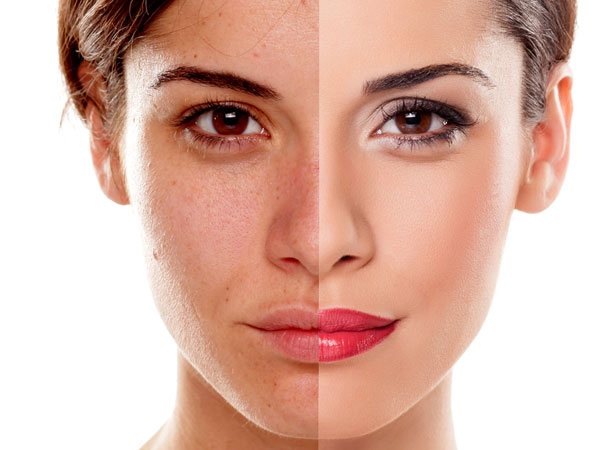Aging is a natural part of life, and so are the signs that come with it. One of the most common and visible signs of aging is the development of dark spots, often referred to as age spots or sunspots. These spots, which typically appear on areas of the skin exposed to the sun, can be frustrating for many individuals. Fortunately, there are ways to minimize the appearance of aging spots and maintain a more youthful complexion. In this comprehensive guide, we’ll provide expert tips from skin care specialists to help you effectively address and reduce age spots.
Understanding Age Spots
Before delving into the expert tips, it’s essential to understand what age spots are and why they occur. Age spots, also known as solar lentigines or liver spots, are flat, pigmented areas of the skin that vary in color from light brown to dark brown. They are primarily caused by prolonged sun exposure, which leads to an overproduction of melanin in specific areas of the skin.
Expert Tips to Minimize Age Spots
- Sun Protection
Prevention is key when it comes to age spots. The most effective way to minimize their development is to protect your skin from harmful UV rays. Skin care specialists unanimously emphasize the importance of sun protection, including:
- Sunscreen: Apply a broad-spectrum sunscreen with SPF 30 or higher daily, even on cloudy days. Reapply every two hours when outdoors.
- Protective Clothing: Wear wide-brimmed hats, sunglasses, and clothing that covers your skin when spending time in the sun.
- Seek Shade: Limit direct sun exposure during peak hours (10 am to 4 pm) when UV rays are the strongest.
- Sun Protective Products: Consider using skincare products that contain ingredients like zinc oxide or titanium dioxide, which provide additional sun protection.
- Topical Treatments
Skin care specialists recommend various topical treatments to help minimize the appearance of age spots:
- Retinoids: Over-the-counter or prescription retinoid creams can promote cell turnover and fade age spots over time.
- Vitamin C: Topical vitamin C serums can help reduce the appearance of age spots and improve overall skin tone.
- Hydroquinone: Hydroquinone is a skin-lightening agent available in both prescription and over-the-counter formulations. It can be effective in fading age spots, but it should be used under the guidance of a dermatologist.
- Alpha Hydroxy Acids (AHAs): AHAs, like glycolic acid and lactic acid, can help exfoliate the skin and reduce the appearance of age spots.
- Niacinamide: Niacinamide, also known as vitamin B3, has been shown to improve the appearance of age spots and uneven skin tone.
- Professional Treatments
Skin care specialists can provide a range of professional treatments to address age spots:
- Chemical Peels: Chemical peels involve the application of a chemical solution to exfoliate the top layer of the skin, reducing the appearance of age spots.
- Laser Therapy: Various laser and light-based treatments, such as IPL (Intense Pulsed Light) and fractional laser, can target and break down pigmentation in age spots.
- Cryotherapy: This procedure involves freezing age spots with liquid nitrogen, causing them to peel off over time.
- Microdermabrasion: Microdermabrasion uses a machine to exfoliate the skin, improving the appearance of age spots and skin texture.
- Microneedling: Microneedling involves the use of tiny needles to create controlled micro-injuries in the skin, promoting collagen production and reducing the appearance of age spots.
- Prescription Topicals: Dermatologists can prescribe stronger topical treatments, such as hydroquinone or tretinoin, to address stubborn age spots.
- Natural Remedies
Some individuals prefer natural remedies to address age spots. While these may not be as potent as medical treatments, they can still provide some benefit:
- Lemon Juice: Lemon juice contains natural acids that may help lighten age spots when applied topically. However, be cautious, as lemon juice can be irritating to some skin types.
- Aloe Vera: Aloe vera gel can soothe and moisturize the skin, potentially reducing the appearance of age spots.
- Apple Cider Vinegar: Some people use apple cider vinegar as a toner to help fade age spots. Dilute it with water before applying to the skin.
- Green Tea Extract: Green tea contains antioxidants that may have a slight lightening effect on age spots. You can apply brewed and cooled green tea to your skin.
- Consistency
Regardless of the treatment you choose, consistency is key to seeing results. Age spots can be stubborn, and it may take several weeks or even months of consistent treatment to notice improvements. Follow the recommended regimen from your skin care specialist, and be patient.
- Prevention for the Future
Once you’ve taken steps to minimize your existing age spots, it’s essential to continue practicing sun protection and maintaining a good skincare routine to prevent new spots from forming.
Age spots are a common concern for many individuals as they age, but with the guidance of skin care specialists and the implementation of expert tips, you can effectively minimize their appearance. Remember that individual results may vary, and it’s essential to consult with a dermatologist or skin care specialist to determine the most suitable treatment plan for your specific skin type and concerns. With proper care and consistent efforts, you can achieve a more youthful and even complexion.

